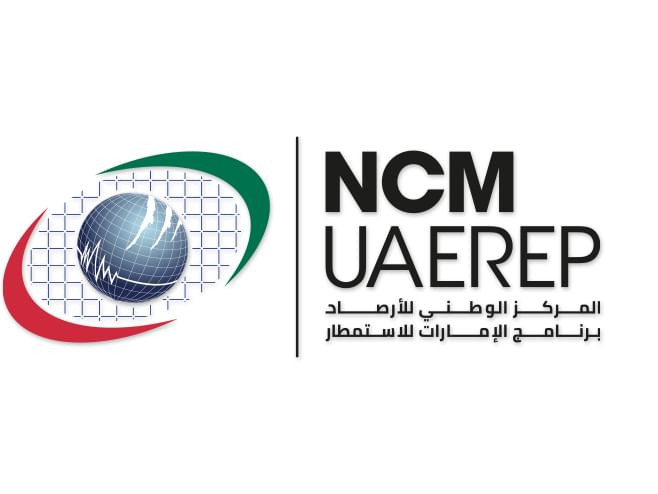
Safe and effective: Enhancing rainfall with novel materials
In recent years, the UAE Research Program for Rain Enhancement Science (UAEREP) has used core-shell NaCl-TiO2 (CNST) seeding material throughout its cloud seeding operations, or rather a specific type of hygroscopic material with two main ingredients.
The UAE is currently the only country worldwide using CNST materials in its cloud seeding operations after the UAEREP successfully completed this research endeavor in 2017.
The concept of increasing rainfall to promote precipitation in arid regions, or even improve weather conditions due to climate change, is certainly not a new one. The idea began in the late 19th century, intriguing scientists and engineers as to how this process may work while remaining safe and effective. It then begged the question: To safely increase rainfall, what materials do we use in the clouds?
Cloud seeding is a form of weather modification that mimics what naturally occurs in clouds, but enhances the process by adding particles that can stimulate and accelerate the condensation and convection process. It is increasingly recognised as a critical tool within the broader strategy of achieving water security in arid and semi-arid regions worldwide, additionally acting as a means for climate change mitigation and protection from pollution.
Since the 1960s, researchers have studied the ways in which clouds may be affected by different kinds of seeding materials. That idea is now advancing rapidly as scientists apply novel material to improve rain enhancement effectiveness, namely hygroscopic seeding materials made possible through nanotechnology.
Hygroscopic seeding materials, such as potassium chloride (KCl) and sodium chloride (NaCl, otherwise known as table salt), are designed to enhance precipitation by attracting moisture in the atmosphere. They are composed of naturally occurring, non-toxic compounds with no foreseeable negative impacts on the environment or public health, making them a key tool in weather modification efforts.
The potential environmental or toxicological impact from cloud seeding materials, both hygroscopic and glaciogenic (which aids in the formation of ice crystals) has been studied for decades. An expert review by the World Meteorological Organisation (WMO) reports no evidence of negative environmental impact. Over 31 papers were reviewed to draw this conclusion, while many other organisations came to the same conclusion.
The lack of environmental impacts was highlighted by many other reviews through statements on weather modification, including three previous WMO statements (1991, 2006, 2015), the Weather Modification Association (WMA, 2009), and a review by the National Academies in the United States (Garstang et al. 2003, 2005).
In recent years, the UAE Research Program for Rain Enhancement Science (UAEREP) has used core-shell NaCl-TiO2 (CNST) seeding material throughout its cloud seeding operations, or rather a specific type of hygroscopic material with two main ingredients. The UAE is currently the only country worldwide using CNST materials in its cloud seeding operations after the UAEREP successfully completed this research endeavor in 2017.
In particular, the CNST seeding material used for rain enhancement is made from naturally occurring and safe ingredients that do not harm the environment or public health. This innovative material mainly consists of common salt, or sodium chloride (90 percent), and a small amount of titanium dioxide (less than 10 percent).
The presence of titanium dioxide acts as a thin outer film or coating. Changing the material’s surface causes the material to become more reactive in rainclouds, resulting in a substance that is more effective in lower and wider relative humidity ranges.
Notably, neither of these ingredients is classified as hazardous by safety regulations in the U.S. or internationally. For instance, the U.S. Occupational Safety and Health Administration (OSHA) does not set exposure limits for common salt, and the amount of titanium dioxide used is far below the safety threshold set by OSHA.
Prof. Linda Zou, a 2015 UAEREP grant awardee and a professor of Civil Infrastructure and Environmental Engineering from Khalifa University, led groundbreaking research using nanotechnology to develop cloud seeding materials. She posited that much of the cloud-seeding materials used today have been around for many decades, yet the techniques are outdated and potentially less effective.
Through significant advancements in nanotechnology and nanoscience, the scientific community is now able to design and engineer these hygroscopic cloud-seeding materials with optimal properties, ensuring water vapour condensation will maximize the rainfall achieved while functioning effectively.
When used in weather modification, the small amount of this CNST material dispersed into any raincloud becomes immensely diluted by the large volumes of rainwater produced. To put this in perspective, typical storms in the Arabian Peninsula produce an average of 1 million cubic meters of water.
The tiny quantity of seeding material used, often between 200 and 1000 grams, results in concentrations that are several hundreds of times lower from the safe exposure limits, making it completely harmless due to its low concentration. This ensures that the rainmaking process is both effective and environmentally friendly.
According to Prof. Zou’s research findings, her results demonstrated that in weather conditions with 100 percent humidity, these unique seeding materials formed a 300 percent increase in large water droplet concentration, which is a critical size for rainfall compared to conventional seeding materials. Prof. Zou’s project is now patented worldwide with the United States Patent and Trademark Office (USPTO) as a novel application of cloud seeding hygroscopic materials using nanotechnology.
By leveraging the moisture-attracting properties of these compounds, hygroscopic seeding can effectively induce rain in areas experiencing drought or low rainfall, providing a vital resource for agriculture, water supply, and ecosystem health without posing risks to the environment or public health.



























